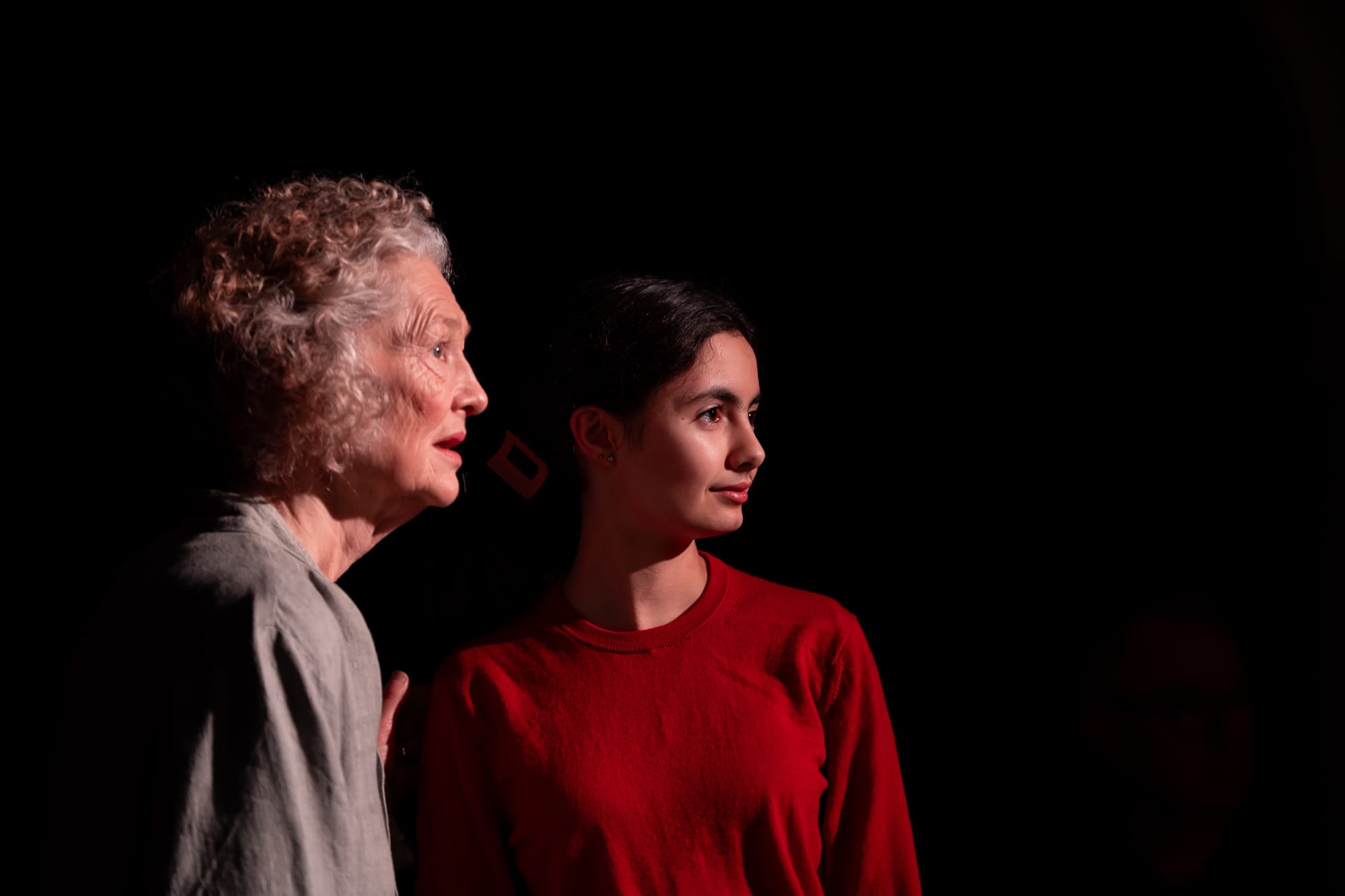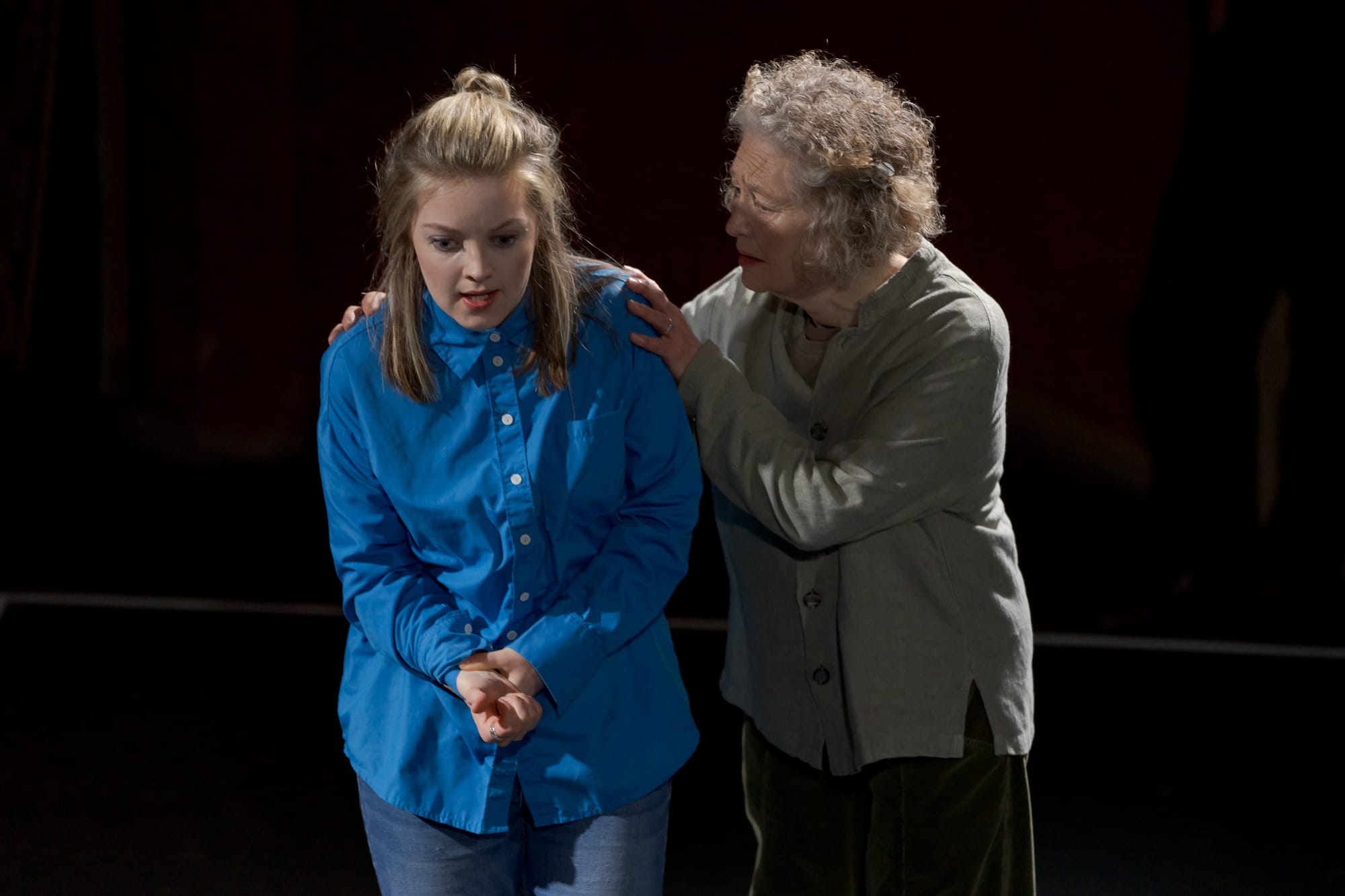Our Mother: Figure at Stone Nest

Our Mother Pergolesi, Mills Figure; Stone Nest, London, 20.03.2024
Pergolesi Stabat Mater, with interludes by Alex Mills
Production:
Creative Producer – Frederick Waxman
Director – Sophie Daneman
Lighting Designer / Production Manager – Chris Burr
Performers:
Dame Emma Kirkby, Rowan Pierce, Nadya Pickup (soprano); Catherine Carby, Alexandra Achilles Pouta (mezzo)
Frederick Waxman (chamber organ / director); Oliver Cave, Yaoré Talibart (violins); Thomas Kettle (viola); Samuel Ng (cello); John-Henry Baker (double-bass); Sergio Bucheli / Jonathan Bougt (theorbo).
Set in a grungy performance space just off Cambridge Circus in London, this approximately hour-long event showed the power of thinking outside the box. The historically informed performance group Figure is decidedly Janus-faced, one head looking forwards through innovative productions such as this, mixing Pergolesi with the music of our time, the other looking backwards to HIP and the purity of Pergolesi’s outpouring of grief that is the 13th-cenuy depiction of suffering, the Stabat mater dolorosa. The poem exists in multiple forms: the Wikipedia entry includes one from an 1853 Roman breviary.
The Divine Feminine hardly features widely in Christian thought, so Pergolesi putting the spotlight on the Devine Feminine in the form of the Virgin Mary, who endures her son’s agonies in her ‘pain untold,’ is a powerful gesture. 18th-century reception of this Stabat Mater criticised Pergolesi for overt femininity (both in the subject matter and, allegedly, in Pergolesi’s own reactions); thankfully, today, its status today is beyond doubt. Two performances at Versailles stick in the memory, for example: Vincent Dumestre and La Poème Harmonique in 2019 (with Sophie Junker and Eva Zaïcik, review) and, in April last year, the male soprano Bruno de Sá with Cameron Shahbazi and the Orchestra of the Opéra Royal under Andrés Gabetta review).
Staging the Stabat Mater opens up a huge range of possibilities, of course, and the approach here was to use five singers (three sopranos, two mezzos) to represent the various ages of Woman (itself perhaps nudging Paganism in its themes of Maiden, Mother, Crone). The evening is called Our Mother, and surely the ‘our‘ is significant; an archetypal mother figure through the ages. except this one is shown in infernal torment as she watches her own offspring die, cruelly nailed to wood.
The stage was cruciform itself: literally, the singers stood on the Cross. The audience was situated around the performance area and - with the exception of a small number of seats – standing; the feel was something akin to a Shakespeare’s Globe, but in the Round. The involvement of the audience was inevitable, therefore (although few could have foreseen the encore, a Mozart Ave Verum Corpus, K 618, including audience participation - the sheet music was handed out).
Inevitably, the Grand Dame Emma Kirkby, in ‘pensioner’s clothes’ of conservative cardigan and corduroys, represented old age, her voice gentle, slightly fragile, ever beautiful, and yet at some level she was the Elder Stateswoman, noble in her duty of death observer. At the other end of the scale was Nadya Pickup, currently studying for her GCSEs, her voice possessing the purity of a permanently-cloister’d boy treble. Rowan Pierce needs no introduction, her voice of a purity matching that of the young Kirkby decades before her. Two mezzos, Catherine Carby and Alexandra Achilles Pouta, fill in the gaps (registrally and in terms of age), both fine singers I hope to hear again soon, and both fine actresses. Phrases are split between singers to expand the original two soloists to five; suddenly, interactions are intensely dramatic, repetitions become differentiated timbral echoes, and Pergolesi’s music, which dwells on dissonance as much if not more than its resolution, itself takes on extra power, perhaps most notably in the eighth movement, ‘Fac, ut ardeat cor meum’.

Pergolesi’s use of gesture, of Affekt, is taken over in turn by composer Alex Mills, who in his Figure-commissioned role plays with Pergolesi’s material, extending it into a Modernist, occasionally Gothic, context. In this performance, everything took on extra layers of impact via symbiotic exchange across the centuries: trills were no mere decoration in the Pergolesi; they were oscillations of anguish. The dissonances of ’O quam tristis’ cut to the quick. Pergolesi’s music dissolved into the Mills, a note extended, suspended in time before landing on the gesturalism of today, bleeding then towards Minimalism.
The interactions between the singers and their reactions to the text they hear sung by others held the attention in a vice-like grasp – Pierce's horror, the emotionally fragile state of the black-clad Catherine Carby and the character’s reactions to that. Lighting is carefully managed, including moments of implied spiritual elevation. Moments of a danse macabre are part of a journey that extends from despair to glimmers of hope and onwards towards a glimpse of Paradise.
Sophie Daneman directed the production beautifully; the ensemble Figure excelled throughout, moving with chameleon-like ease across the Pergolesi/Mills divide.
The entire performance lasts around an hour or so, but its impact far outweighs its temporal duration. The casting is faultless, and all five singers and the instrumentalists deliver in spades: on the first night, there was not one sag of tension all evening. Performances extend from March 20 to March 23.
Other Pergolesi Stabat Maters featured on Classical Explorer are those of Christophe Rousset on Alpha, and “Bach’s Pergolesi Stabat Mater (!)” - Bach's Psalm 51, BWV 1083, after Pergolesi's Stabat Mater - while we should not forget Haydn's setting, beautifully realised by René Jacobs.
Photos © Kristina Allen
